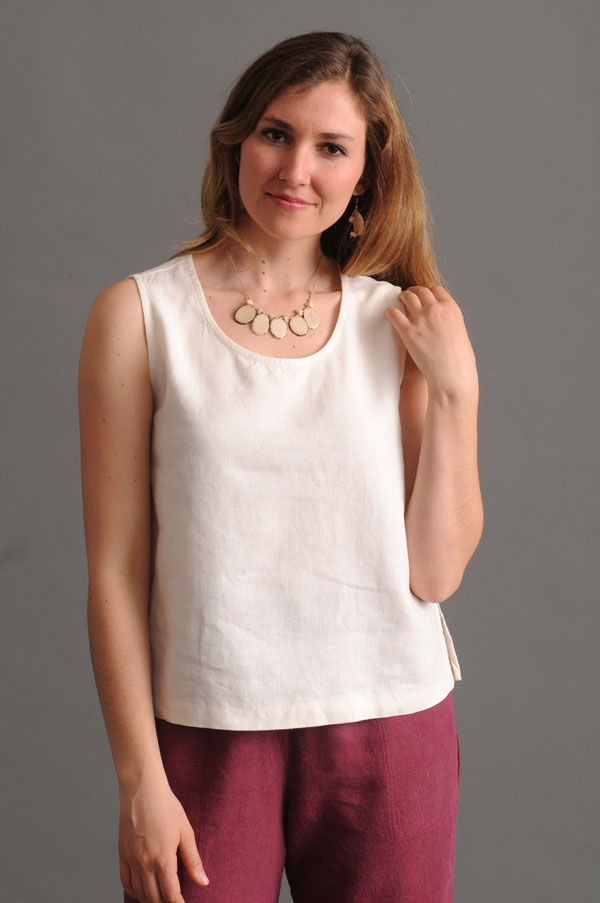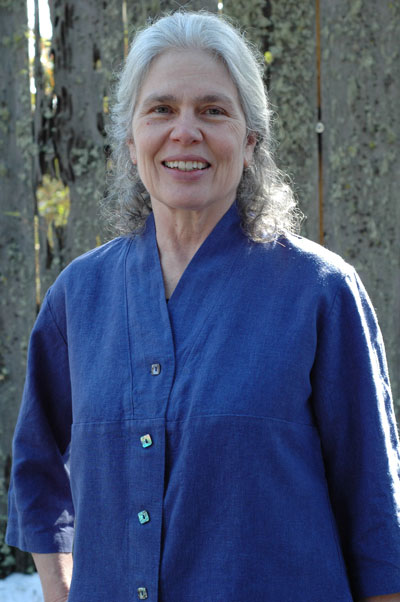Sustainable fashion shoppers: nine terms you need to know
Posted by Rose on 1st Jul 2020
A working vocabulary for concerned consumers who shop for eco-fashions
As I’ve blogged about before, digging into just how environmentally friendly and sustainable certain fibers and fashions are can be a challenge. As someone who produces eco-friendly hemp and Tencel women’s wear, educating myself about sustainability is a continual process.
Here are some definitions for terms you’ll likely run into when shopping for sustainable clothes. They’ll help you cut through the jargon jungle and marketing talk when seeking eco-friendly fashions.
Acacia’s Tank Top in undyed Natural is cool and is the ultimately sustainable summer wear.
Sustainable Fashion
The term “sustainable” is defined by the UN as, “development that meets the needs of the present without compromising the ability of future generations to meet their own needs.” Applying those principles to fashion and fiber manufacturing means doing the least harm possible to the environment, workers, and consumers. It involves the protection of ecosystems, prevents depletion of natural resources, and avoids labor exploitation. Today, the most sustainable women’s wear makers are offering more transparency and traceability information to their customers. Some are beginning to grapple with closed loop manufacturing in which recycling and repurposing are built into each product. (See Circular Fashion below.) But we still have a long way to go. See my post about how the global supply chain makes being an informed consumer more difficult.
Fast Fashion
Fast fashion is everything that sustainable fashion is not: environmentally destructive, non-transparent, and exploitive of workers, animals, and the planet. The rise of sustainable fashion is largely a response to fast fashion and growing recognition of its many downsides. Fast fashion is animated by a business plan that prioritizes lowest possible selling price and high merchandise turnover. New apparel lines are continually introduced while inferior fabrics and sketchy assembly is disguised beneath trendy looks and cheap, glitzy appointments. Most fast fashion contains synthetic materials, many of them derived from petrochemicals that are a primary cause of microfiber plastic pollution. Manufacturing, dyeing, processing, and laundering fast fashions is rapidly degrading ecosystems around the world in a stew of toxic chemicals and unsustainable practices.
Slow Fashion
The term slow fashion grew out of the slow food movement and values many of the same qualities. Slow fashion is concerned with the sustainabilty of the resources, materials, and methods used in fashion. It focuses on a minimalist consumption model in which we buy better clothes and discard them less often. The capsule wardrobe reflects slow-fashion values. Composed of carefully selected garments that work together and provide long-term durability and classic, fad-proof looks, capsule wardrobes are a great step toward simplifying our lives while also becoming better planetary citizens.
The Tuxedo Top in Sapphire has been a popular choice this season.
Circular Fashion
Circular fashion is about designing pollution and waste out of our apparel while also providing for natural regeneration at the end of its life. Fibers such as the hemp in Sympatico’s clothing collection easily biodegrade and return to the earth after many years of service. The old business model of take-make-dispose doesn’t work long term, and our most enlightened manufacturers are moving toward circular fashion principles.
Eco-friendly Fashion
Most of the definitions I’ve seen for eco-fashion or eco-friendly fashion refer to a subset of concerns within the complex question of sustainable fashion. These concerns are focused primarily around environmental effects and include the way the clothing is made, how it’s dyed, packaging, and whether the process of creating the garment is a healthful one for its makers. Eco-friendly fabrics are often composed of natural fibers grown organically without synthetic fertilizers, pesticides, or herbicides. Also, recycled fabrics often fall into the category of eco friendly.
Ethical Fashion
The definition of ethical fashion is still in a state of flux as we figure out what exactly makes apparel ethical. It seems to me that the term may become our most holistic way to describe clothing that has been grown, processed, designed, and manufactured with an abiding concern for doing the least harm. Ethical clothing makers consider all the inputs and outputs their product lines involve, and then consciously seek materials and methods that support the planet and its people.
Greenwashing
You’ll find all kinds of greenwashing in the marketing of consumer products these days. It’s the practice of presenting a company’s products, environmental policies, and activities as being eco-friendly when they are not. Due to greenwashing, terms such as “natural” no longer assure the savvy consumer.
Recycling and Upcycling
While we have a general sense of what recycling involves—converting what is otherwise waste into something new—upcycling is an area of growing importance in the sustainable fashion arena. Upcycling converts waste into reusable materials, but in the process improves the quality and value of the materials. Today, researchers are creating fibers are spun from spoiled milk and agricultural waste and trying to make these technologies scalable to mass consumption. See my blog post, Sustainable clothing’s future: Tech turns waste into fashions.
Living Wage
As the term suggests, a living wage is one that allows workers to live a decent life. In many nations, including even our own, state-mandated minimum wages may be well below that decent-life threshold. In places like Bangladesh, Pakistan, and Vietnam, apparel workers are paid one-quarter to one-half the wages needed to meet the decent-life standard. And for many of these workers, conditions and hours are abysmal and factories are unsafe. In the developing world labor laws, if they exist, are loosely enforced.
Share:




